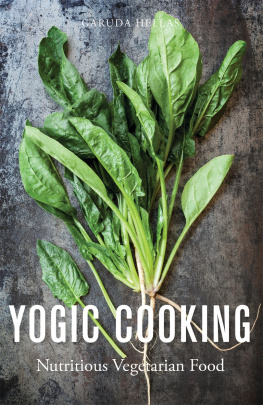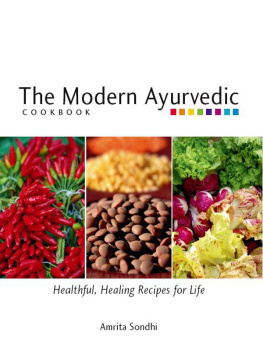
Copyright 2018 by Lisa Joy Mitchell
All rights reserved. No part of this publication may be reproduced, distributed, or transmitted in any form or by any means, including photocopying, recording, digital scanning, or other electronic or mechanical methods, without the prior written permission of the publisher, except in the case of brief quotations embodied in critical reviews and certain other noncommercial uses permitted by copyright law. For permission requests, please address She Writes Press.
Published October 16, 2018
Printed in the United States of America
Print ISBN: 978-1-63152-347-2
E-ISBN: 978-1-63152-348-9
Library of Congress Control Number: 2018939298
For information, address:
She Writes Press
1563 Solano Ave #546
Berkeley, CA 94707
Cover and interior design by Tabitha Lahr
Photographs by Roger Winstead, with a photo apiece by Ingrid Beckman ()
Additional art and photographs
Front cover and Blessings lotus paintings Karin Michele Anderson
A NOTE TO THE READER: This book is intended as an informational guide. The ideas and suggestions contained in this book are not intended as substitutes for medical care and treatment by a physician. For any medical condition, always consult a licensed health care professional.
She Writes Press is a division of SparkPoint Studio, LLC.
In loving memory of my father,
Reuben R. Cagan,
and for my mother,
Bonnie Silver Cagan,
with gratitude
for setting me on the path
to a sacred and delicious life
May all who explore Sacred & Delicious experience true nourishment and delight through pure, delectable food.
May we awaken to the sacredness and joy of healthy eating.
May we learn to eat consciously so that we honor ourselves and protect our Mother Earth.
May all who suffer find their perfect paths to healing.
And may all people everywhere have an abundance of healthy food.

When you eat food of great purity, you can soar in ecstasy.
You feel so light, you feel lighthearted.
This happens because the knots of the heart
are being released.
Sustained by good nourishment, you are able to perform
all your actions with equipoise,
and your entire being dances with joy.
Then life itself becomes prasad,
a great boon that carries Gods blessings.
~ Gurumayi Chidvilasananda
Introduction

P icture sitting around the table in your kitchen or dining room with those you love. As people take their first bites of a meal you have just prepared, for one brief moment no one speaks. Except for the faint sounds of forks clicking on plates, the room is silent. Then, as if on cue, comes a sweet chorus of murmurs:
Mmmmm... oooooo... aaaahhh!
When we eat delicious food, we experience such deep satisfaction that most of us cannot refrain from vocalization. Oh, my God! someone will sigh, almost reverently, after sampling a particularly sumptuous dish. This food is divine! someone else will chime.
Moved by our passions as well as our fundamental need to eat, we build much of our lives, our relationships, and our most sacred occasions around the sharing of food. Whether we gather to commemorate life, give thanks for good fortune, or comfort the bereaved, we nourish and celebrate one another with meals that are intensely delicious and stoked in traditions both simple and elaborate. In my own life, food has been a primary source of celebration and comfort since I was very young. Many of my fondest childhood memories revolve around meals eaten with my family. For us, food was the sweet center of our existence.
I grew up in the 1950s and 60s in a Jewish home in Florence, South Carolina, where there were fewer than thirty Jewish families, a tiny percentage of the towns population. My mother invested great care in filling our family life with Jewish observances so we would love, and would never forget, our heritage. As Shabbat descended into our household each Friday evening at sunset, my father, brother, and I waited in anticipation for dinner while my mother sweetly sang a prayer over the Sabbath candles. The food remained untouched until we had said the final prayers over the wine and bread. Only then would we dive enthusiastically into our less-than-kosher Sabbath mealroasted chicken or beef brisket smothered in tomatoes and onions, a vegetable side dish, dinner rolls with butter, and, of course, our favorite: the kugel. (For the uninitiated, kugel is a baked pudding. In our house, it was made with egg noodles, eggs, sour cream, and sugar. Just think of it: youre eating dessert, and its still the main course!) It was heavenly.
Some of my happiest memories from childhood include the scent of food wafting through the house. Before our annual Yom Kippur fast and during the Passover seder, our family and friends would come together for a soul-satisfying meal. And how I loved that my mother always served whatever I requested for dinner on my birthday; I would mull this important menu over for weeks before announcing it to Momwell in advance of my special day! After my brother and I became adults, I eagerly anticipated traveling to rural Virginia for the Thanksgiving dinners we would all cook together in his cabin in the woods. And I will never forget the jubilant stroke of the knife as my husband and I joined hands to make the first slice in our tiered and flower-bedecked wedding cake.
In my life much of what I find sacred is linked to something delicious. It was only recently, however, that I recognized this subtle connection. My first perception of it came when the name for this book appeared on the screen of my consciousness. Id been considering various titles, waiting for something to click, and then one day the words sacred and delicious sprang forth from inside like a gift. I received this inspiration as an invitation to explore my own sacred relationship with food.
Delicious and Sacred
I must admit that long before I recognized the sacredness of food, I reveled in the many layers of delicious. For a good part of my life, the word delicious conjured up typically American comfort foods. I craved potted meats simmering in their juices, casseroles rich with cream and cheese, dairy-laden desserts like cheesecake and ice creamthe real deal, please; no low-fat or soy substitutes for me! And of course I craved anything chocolate! For some readers, this may still be your ideal, and if so, your definition of the word delicious will echo mine during that period: sweet, rich in fat, high in calories. The more delicious the food, the more of it I ate. The concept of moderation did not have a seat at my familys table. Love was doled out in second and third servings.
By the time I reached my early forties, I was suffering from a number of acute and chronic health conditions: acid reflux, irritable bowel syndrome, osteoarthritis, chronic back pain, periodic bronchitis, insomnia, and more. At the urging of my husband, who is a healing practitioner, I became a patient and student of Ayurveda, the ancient medical science of India.
What first attracted me to Ayurveda was its promise to resolve the underlying imbalances in body, mind, and emotionsimbalances that Ayurveda defines as the primary cause of disease and discomfort. As I began to learn about Ayurveda, I recognized that my health problems stemmed, at least in part, from a lifetime of dysfunctional eating. When I embraced Ayurvedas approach to eating and living, I experienced gradualyet noticeableimprovements. Almost twenty years later, I can happily report cumulative and significant physical improvements. For one thing, I can digest most foods, and this shift happened within weeks of changing the way I eat. I am pain-free much of the time. Also, my sleep is greatly improved, my emotions are steady, and my mind is clear. Most exciting of all, at the age of sixty-two, my energy level is better than it was two decades ago! Back then I could hardly swim one lap, and today I can swim a half mile (thirty-six laps!) with ease.
Next page









